
Uneven story with wildly over-the-top wuxia action
Butterfly and Sword was a bloody, high flying, star-studded, overly complex, mess of a movie. And entertaining in a way only an over-the-top wuxia starring Michelle Yeoh, Donnie Yen, and Tony Leung Chiu Wai could be.What was it about? Good question. I've watched it twice and it still has confusing elements. Every synopsis I read had a slightly different take on it. Lady Ko, Meng Sing Wan, and Yip Cheung have been together since they were street kids doing what they had to do to survive. All grown up, the three are assassins who often take well paid jobs from the eunuch. Lady Ko is the boss, motivated by gold and power. Sing is lovers with Butterfly, the daughter of a martial artist killed in battle. Sing pretends to not know any martial arts, telling her he has to go on business trips every once in a while. Yip also works for Ko and spends his spare time peeping on her when she’s bathing. It’s not really a love triangle, this is more like a love conga line. Yip loves Ko, Ko loves Sing, and Sing love Butterfly. When the eunuch sends Ko and her Happy Forest to take down the Elites Villa and retrieve a letter listing rebels, the blood begins to spew and body parts start flying.
Michelle Yeoh gave a nuanced performance of a deadly assassin who grieved her lost childhood and love. I wasn’t crazy about the jealousy trope for a strong woman, but she made it work. Donnie Yen was the love sick puppy lacking the courage to tell Ko he’d loved her since they were children. Tony Leung gave a lighthearted take on the assassin in love. I’m not familiar with Joey Wong, but her Butterfly was annoying. Despite all the strategizing, spying, betrayals, and gruesome fights, the story came to a screeching halt every time Butterfly came on screen.
The fight choreography was wildly excessive. Sing was able to launch himself like an arrow from a line in a tree or Ko’s body. Was the craziest technique I’ve seen in a wuxia, especially when he blew through people’s bodies. Nothing could withstand the characters’ abilities, not even buildings. Donnie and Michelle had a great fight scene in a bamboo forest that left most of their opponents skewered. It also showcased Michelle’s flexibility. Even though there were numerous gruesome decapitations by a variety of methods, they were fake enough to be more humorous than terrifying. There was even lethal soccer action! If you don’t like wire-fu, skip this one. Most scenes used wires and sped up action. Tony Ching put his imagination to good use developing the maniacal fight choreography.
Butterfly and Sword was not a great movie, but it was fun. The story was maddeningly disjointed and edited. Fortunately, Michelle Yeoh, Donnie Yen, and Tony Leung were in their prime and held nothing back. When scenes cut abruptly into a different one or the reason behind certain actions weren’t explained, it helped to keep an eye on the stars. This is a movie for fans of the genre and who don’t mind a film that isn’t polished and doesn’t take itself too seriously.
11 March 2024
Was this review helpful to you?
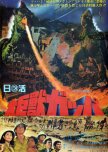
This review may contain spoilers
"There's more to life than ambition"
Gappa: The Triphibian Monster had a couple of unique things going for it but mostly it was a re-work of other, better Kaiju films. Humans had to re-learn the most basic lesson of nature---never approach or steal a baby animal as you will have to deal with the wrath of the mother.A publishing CEO has decided to build Playmate Land (Hugh Hefner's use of that word has ruined it for me), a jungle paradise and experience with exotic animals. He sends a reporter, a news photographer, and a scientist to a remote island to see if there are any new species that could be brought to the attraction. The team is greeted by a primitive tribe, some unfortunately in black face. After a statue is destroyed during an earthquake a cave is revealed. Kurosaki and Koyangi discover a large egg that hatches. Tanooka, the researcher, along with Kurosaki decide to take the creature back to Japan even with the tribe begging them not to for it will make Gappa angry. No sooner have the men handed the creature over to the CEO than Big Daddy Gappa and Big Mama Gappa begin to wreak havoc in Japan searching for their offspring.
This was a lesson in the consequences of reckless ambition and greed. When Koyangi begs Kurosaki to return the baby Gappa to its parents he gives her the ‘men have to do what men have to do because we are men’ speech. She looks at him like he’s an idiot and wondering why she’d ever fancied him. Even after Kurosaki and Tanooka come to their senses the CEO refuses to accept his losses and to take responsibility for the epic disaster. While the men come to the conclusion that there is more to life than ambition and other people are important, too, Koyangi’s decision at the end to come to her senses and accept she’s an ordinary woman and needs to get married and wash diapers was eye-rollingly sexist.
The miniatures were about average for this timeframe. Despite the fact that the Gappas could fly, walk, and even breathe under water (where the Triphibian comes from) they were terribly static. They lethargically and quietly lumbered through the cities, unable to move their arms and bodies much. Other than Mothra when her besties were kidnapped and she went on a rampage to have them returned, the Gappas had the strongest motivation for destroying the humans. Even with that compelling motivation they came across as soulless. This is the first Kaiju film I’ve seen with a nuclear family and one that was anthropomorphic which should have felt more heartwarming. Small children might be more moved by it.
Gappa: The Triphibian Monster was actually a loving family of Gappas who weren’t afraid to tear down Japan to protect their own. If they’d had more mobile costumes and the film had better direction, this movie would have been raised to a higher tier in Monsterdom. As it was, Gappa didn’t lay an egg, but it didn’t soar either.
10/10/23
Was this review helpful to you?

This review may contain spoilers
"You are death!"
Maria tread over familiar revenge movie ground, not adding anything particularly innovative. For those who watch action and martial arts films such as Kill Bill, The Villainous, or La Femme Nikita you'll be able to call out what will happen next with little difficulty. Still, I did find this film entertaining even if it didn't offer anything new to the genre.Lily/Maria had been a trained assassin working for Kaleb and the De La Vegas crime family. After she refused to kill two innocents, she faked her death and "retired". A few years later she's enjoying her life with a husband and daughter. Kaleb discovers she's still alive when he's tasked to kill an incorruptible governor. He's in a Cain and Abel relationship with another killer working for the family who wants his spot in the hierarchy. A standard revenge trope later and Maria is on a rampage. I truly wish writers would be more innovative when writing for women assassins, most of these movies are incredibly similar and use the same tired paradigm set decades ago.
The movie utilized Filipino martial arts and knife fighting as well as plenty of gun action. The fights were well choreographed but not extraordinary. What I liked about the various confrontations was that there were few extended fights with any rival, Maria competently took out the bad guys in a precise and efficient manner.
For those who are squeamish, there were several gruesome torture scenes and plenty of blood spurting with the fights. Despite the provocative poster there was no nudity only one shower scene where no bits and parts were on display.
Christine Reyes was credible as both the happy homemaker making sure everyone ate a healthy breakfast and the cool, calculating assassin. The rest of the cast were capable, but not memorable. For the most part, Maria wore sensible rampage clothes. Often directors dress female assassins provocatively to lure or appease male viewers. There was a club scene where she wore a sexy dress and ridiculously high heels. The actress seemed to have trouble walking on the thin heels, I would have broken an ankle. I was pleased that she went back to pants and sensible shoes for kicking and chasing down her enemies. The crime family's female assassins were more scantily clothed. Win some, lose some. Lastly, the score was properly edgy for all the death and mayhem.
I've watched several Filipino films, and Maria had the best production values of the lot. There was a nice use of color and light. The fight scenes didn't seem to have a high budget, but it didn't appear cheaply made either.
While the movie was predictable, Maria was a worthy assassin to add to the female cadre of action "heroes". Also, it was nice to see a Filipino film embracing the world of badass female leads. Next time maybe they can be the one to break the mold that most countries are content to use repeatedly.
4/15/23
Was this review helpful to you?
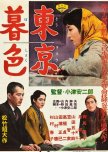
This review may contain spoilers
"I want to start over"
Tokyo Twilight is a film about a disintegrating family and the darkest film I've seen by Director Ozu. The darkest and the most difficult for me to come to grips with. This last of his films in black and white was gorgeous to look at, one of his most aesthetic in regards to framing and composition. But I come back to the subject matter. Do I rate and view it as the audience it was intended for? Or do I rate it as a 21st century woman who was appalled by aspects of the story? I ended up splitting the difference.Takako and her young daughter have moved back in with her father, Sugiyama Shukichi, though he doesn't know she's seeing it as a permanent situation. After pulling the information out of her, she confirms what he's been hearing. That the good Professor Numata she's married to has been drinking heavily. He is also abusive to Takako, but especially her daughter when things have not gone his way at work. Numata's admitted to having no paternal love toward his child.
Akima is the younger sister. She's carrying a secret within her and desperately trying to find her college boyfriend who put it there. With no mother to confide in and not close enough to her sister to share, she bears the burden alone. She stays out late at night and because of this is repeatedly described by men as decadent and wild. Waiting at a café where her boyfriend, Kenji, told he'd meet her she is taken to a police station by a police officer because she shouldn't be out late alone. The place was a known hook up joint for prostitutes, and with Kenji never showing up, it looked like a cruel joke was played on her. Ultimately, she decides to rid herself of her secret since her boyfriend has mostly rid himself of her. Later her aunt tries to play matchmaker, with Akima crying forlornly that she will never marry or have a child.
Shukichi is proper and polite to everyone but also an authoritarian father. He's ready to cut Akima off because he found out she'd been taken to the police station but Takako steps in and soothes his anger. Years earlier Takako would have married someone she'd cared for if Shukichi hadn't insisted she marry Numata instead. His word is the law in their household.
If all this wasn't enough drama, the missing mother shows up in a mahjong parlor Akima and Kenji's friends frequent. No secret stays buried and soon the daughters find out she's back and why she left. Akima fears she has her mother's bad blood and will never be happy or that she was illegitimate. Takako cannot forgive her mother for abandoning them and holds her responsible for Akima's problems. The mother was an enigma, she wanted to reconnect with her daughters but when she found out that her son had died several years earlier, she did so without so much as batting an eye.
Takako and Akima both wish to start over and find happiness. In the end, neither do. Akima suffers a horrible narrative fate to punish her for becoming too modern and breaking familial tradition and traditional female roles. Takako fears her daughter will end up like Akima if she doesn't have both parents raising her and decides to return to her husband. When she informs Shukichi he nods his head and says she'll be successful this time if she tries. Takako looks like a woman heading to the guillotine, painfully aware happiness is not in hers or her daughter's future. After Takako moves out the maid helps Shukichi get ready for work, the birds are singing, the sun is shining and the swelling music tells you this is a happy ending. Maybe for Shukichi it is, but not for his children. Somehow this father remains blithely unaware of his unhappy role in the dissolution of his marriage and the sorrows of his children.
As I mentioned, the framing and shots were among some of my favorite. Ozu's use of light and shadow relegated some scenes to true artwork. Mostly, the score was pleasant enough though the music's bright tone during a tragic time seemed out of place. Ryu, an Ozu regular, did well as the quiet authoritarian father. While this may have been my favorite Hara Setsuko performance thus far, she showed a variety of emotions instead of smiling most of the time, it was distracting knowing that she was only 3 years younger than her "mother" in real life. Arima Ineko was called upon to show a complex array of emotions as she dealt with her family, her irresponsible and selfish boyfriend, and sitting alone making decisions beyond her years and succeeded. The acting though often subdued as it is in Ozu's films felt more thoroughly rounded than usual. All of the characters felt like real people. Ozu's insistence on some characters staring directly into the camera while saying their lines is still a detracting custom for me.
The whole thrust of this story came down to the idea that the family was destroyed because the mother found love while the husband was stationed in Seoul and left upon his return. The daughters didn't have a proper female presence which ended up corrupting Akima. A father's love could not make up for that, even though Takako did not go off the rails. Akima had sexual relations with the boy she loved and was punished in every way for it while he escaped with no repercussions. If the doors of propriety could have been cracked opened for real communication, she might have been able to talk with her father or sister to seek support and help her make the decisions she needed to make. Takada was chained to a man who didn't love her or their child and was abusive. She returned to him because it was the "right" thing to do. And her father simply smiled benignly instead of seeing the fear in his daughter's eyes and supporting her. I know Ozu had a father who was often gone, working in another city, but somehow he missed how a vicious drunk and emotionally vacant father can scar a child forever even more so than an absent one.
This was not a story of reconciliation or redemption, but of punishment and retribution all tied up in a polite, proper bow. Each of the female characters were left in pain and an uncertain future with no chance to start over. The men all went about their happy way. I can usually either follow Ozu's train of thought or make excuses for him, but not this time. Even though his viewpoint was a common one in the 1950's, I was appalled at his treatment of women in the name of tradition and family unity.
2/20/23
Was this review helpful to you?
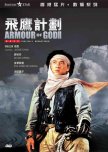
This review may contain spoilers
Sometimes it's better to travel alone
Jackie Chan had a big budget to make a sequel of sorts to Armour of God in Operation Condor. He once again plays Asian Hawk, simply referred to as Jackie, this time hunting Nazi gold in north Africa.The movie opened with one of the most spectacular motorcycle and car chases I've ever seen. One stunt in particular was death defying enough that Jackie shows the scene three times from slightly differently angles just to make sure we appreciate it. Near the end of the chase, he repeats the viewing for another ambitious stunt. I was ready to sit back and be entertained by this high velocity ball of energy. Instead the movie came to a screeching halt when Carol "Do Do" Cheng's character was introduced. The stereotypical "know it all" female control freak was to accompany Jackie and be in charge of him on his trip to find the Nazi gold. As if one annoying female character wasn't enough, Condor adds another. This time the granddaughter of one of the Nazis who was in charge of the treasure base will also be making the trip. Later, they would add another useless female character. They all had the ability to do exactly the wrong thing at the right time to make everything worse. I'm also pretty sure they must have been paid per scream. There was a lot of screaming and needing to be rescued. If this is your idea of humor you are in for a real treat. For me, it made the center portion of this film interminable. To make matters worse, the fights in the middle portion of the film were scarce and uninspired.
The final segment of the film picked up. The female characters still managed to behave absurdly, but at least the stunts were better. Jackie had to fight two foes in a giant wind tunnel for testing planes. Here at least was some inspired action and humor involving Jackie and his fighting style.
There were also some questionable representations of other cultures. The 1990's might not have been the most sensitive time, but I found the portrayals offensive. Even more offensive was the idiotic portrayal of every female character. I finally had to mute the TV during some of the scenes to be spared the screaming and the "save me Jackie!" cries.
This is a highly popular Jackie Chan film, especially from many people's childhood memories. Unfortunately, that was not my experience. The beginning of the film and the end were stunt triumphs. The cringeworthy middle left me wishing the bad guys had been better shots. This was Operation Turkey* for me.
*turkey is not only a bird, but American slang for a dud
2/5/23
Was this review helpful to you?
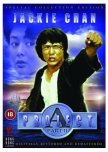
This review may contain spoilers
Fate is on my side!
Jackie Chan's Dragon Ma is back for this sequel to Project A without Sammo Hung. He has to face not only the criminal Tiger Au, but vengeful pirates, rebels, and most of all a corrupt police officer who wants him dead. Dragon has his hands full and sometimes handcuffed all while trying to navigate the conspiracies and death threats. This is vintage Jackie Chan with plenty of hard- hitting fists, kicks, falls, and laughs.The plot is fast moving as Jackie has to take down the criminal element, deal with rebels and their secret book of names, avoid being killed by his superior, and escape the pirates' flying hatchets sometimes all at once! The story has weak areas as the double crosses and changing alliances take place, but the action is non-stop and the main reason for watching the movie to begin with.
One of the funniest scenes takes place in Maggie Cheung's home as a stream of good guys and bad guys revolve around her household searching for places to hide, often unaware of the others. Another inspired bit has Jackie and his nemesis Chun handcuffed together as a hatchet wielding gang(plank?) of pirates chases them through town.
The stunts often end with someone hitting the ground hard or smacking into a giant vase or poles on the way down. In one of the last scenes, Jackie runs down a falling wall and afterwards the building façade lands on him with little room for error to avoid a calamitous injury. This film is full of some of the most inventive fight and stunt scenes you are likely to see. Though the final fight scenes are long there is so much variety with Chan and different fighters and stunt elements it would have been hard to be bored.
Chan avoided the obvious mugging from some of his later movies and was a joy to watch as he ran up and down walls, cleverly finding ways to escape perilous situations. The cast was solid. Rosamunde Kwan appeared as a rebel. Michael Chan provided a great foil for Jackie in one of the early fights. And Lam Wai as the corrupt Superintendent Chun managed to keep up with Chan while they ran, flipped, and fought handcuffed together in a memorable sequence. My only disappointment was with Maggie Cheung's dipsy doodle role. She's so much better than the idiotic female she was often asked to play in Chan's movies.
The spectacular stunts and fights made up for a less than compelling story. This film was when Jackie Chan was starting to hit his stride as a choreographer, director, and star. Other films might have had more dangerous stunts but Project A 2 had plenty to keep your attention.
2/5/23
Was this review helpful to you?
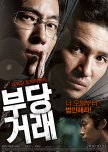
This review may contain spoilers
Safety is Life
The Unjust took direct aim at the abuse of power and systemic corruption from the institutions who were supposed to be arbiters and bastions of justice. No layer within the buildings designed to protect and serve was left unsullied from the top to the bottom. This film was a bleak political thriller and at times, dark comedy.Chief Choi, brilliantly played by Hwang Jung Min, has been repeatedly passed over for promotion. He throws in with his boss never dreaming of the cost. There are cases intertwined that end up in a stranglehold around him. A building development with bribery issues with the prosecutor in league with one gang and Choi working with the rival criminal developer and a serial killer where the suspected perpetrator is killed by a cop with ties to one of the victims whose body must be disposed of and a replacement needed to take his place. The political intrigue and corruption flows from the Blue House down. The two departments end up at war with Choi being illegally investigated by the prosecutor and Choi working with Sang Suk Gu, the criminal developer. Sang has the resources to help Choi find a replacement and clear up loose ends. But in the end, who all will be considered a loose end?
The story was not exactly taut and had pacing issues. There were times when an already complicated and occasionally convoluted story wandered down a violent path not integral to the plot. It could also be difficult watching a film where there weren't any good guys. Well, there was one, but like the original conscience, Jiminy Cricket, he was squashed. The main characters were ready to sacrifice anyone to get ahead or to make a buck. As the conspiracies progressed the stakes grew higher where their lives and freedom were on the line making them all the more dangerous and desperate.
The acting was a mixed bag. Hwang walked the balance between cocky and trapped as he navigated the deadly game. In contrast, Ryu Seung Beom as the corrupt prosecutor, Joo Yang, chewed all the scenery within reach, making his character not only despicable but laughable as well. There was a who's who of today's ahjussis on screen. My favorite was seeing a young Ma Dong Seok, noticeably smaller, but still strong, with a peek into his future muscular best hitter ahjussi status.
The action was plentiful, quickly paced, and bloody. Cho Young Wuk created a fantastic score for the film, perfectly setting the mood for each scene. The film looked and sounded great.
At the disputed building site and the location of several murders, a sign hung that read "Safety is Life". The unprotected played without a safety net to their misfortune. In the end, those with powerful friends and family, and those in the highest levels of power were left untouched by scandal and blood. It was the players on the ground who became crushed by the building they helped maintain.
"Good job, bad job what does it matter at this point. What matters is that we believe it."
2/2/23
Was this review helpful to you?

This review may contain spoilers
It's not what you eat, it's who you eat it with
From the moment the familiar theme song played I immediately relaxed and drifted off to the magical place where the Master will make whatever you want to eat. Open from midnight to seven a.m., the Master not only had his regulars show up, but also some new faces in Midnight Diner 2. Everyone, as always, is served their favorite comfort food, given a few gentle words of encouragement, and leave feeling better about themselves.Midnight Diner 2 opened with the regulars dressed in black. All of the customers had been to different funerals. Only one woman in funeral attire had not. A lonely book editor when frustrated at work wore black and ordered the Master’s fried pork strips. The combination usually lifted her mood and helped her regain her fighting spirit. At a funeral she fell victim to a fetishist and Master helped her with the words she needed to find her way again and a little help from the dish she loved so much.
Story 2 was about a soba noodle restaurant owner unable to let go of her young, but adult son. He had fallen in love with a woman 15 years older than himself. It would take some special udon noodles to help heal this mother-son relationship.
Story 3 was another tale of a woman being scammed. This time an elderly woman fell for a scam involving her son. So desperate was she to help the son she hadn’t seen since he was a boy that she dropped everything and traveled to Tokyo to hand over her money. Master’s pork soup would have to work overtime to bring this woman the closure and redemption she was in desperate need of.
I have watched all of the seasons of this delightful drama and the first movie as well. In all the heartwarming stories, I have never been bored or disappointed. This movie provides a balm to a world-weary spirit. The people who frequent the Master’s establishment have learned to pass on the kindness and acceptance he has given them. Though it may stretch the bounds of believability at times, it’s nice to escape to a place with delicious food where someone will care about your problems and give you a helping hand or an encouraging word.
1/30/23
Was this review helpful to you?
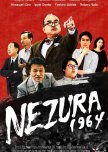
This review may contain spoilers
An under-rat-ed making of a failed Kaiju mockumentary
(Warning! Rat puns ahead!)Director Yokokawa returned to the mockumentary by giving Kaiju fans an imagined look into the making and scrapping of the 1964 film Giant Horde Beast Nezura. Yokokawa displayed his devotion for the genre and once again made sure that a bit of Tokusatsu history was not forgotten. Before there was Gamera, Daiei began production on their vision of a giant monster to compete with Toho-a horde of rats! This short film showed an enor-mouse amount of love on a tiny budget for the forgotten terrors.
The movie was largely in black and white as if the filming was done in 1963. The film starts with the executives brainstorming ideas for their next big hit. Feeling that their competitor (ahem, Toho’s Godzilla) had grown stale they sought out a new monster to fill the void. After watching Alfred Hitchcock’s Birds and being inspired to use a more common animal, the vile enemy was agreed upon…rats. They also decided to use real rats for filming with their miniature sets. The “documentary” takes us through the miniature set making, the model creator, and the crew trying to make the rats more menacing. Ultimately, they took a truck up and down the streets offering to pay 50 yen for every rat given to them. The street rats were much more active. Unfortunately, they were also carrying fleas and disease. The powers rat be at the Bureau of Public Health upon hearing complaints from nearby residents shut them down. In real life and alluded to in the film, the rats were doused in oil and set on fire to dispose of them more humanely. I doubt the rats thought it was that painless.
I’m not sure who thought rats were a great idea for a film, they are notoriously difficult to work with. Everyone has heard the horror stories of how demanding Jerry was while Tom was a real pussycat to get along with (ancient Tom and Jerry cartoon reference). Jokes aside, because of the difficulties the movie was abandoned after only 3000 ft were shot. This mockumentary did not use any of it, if any footage is still in existence, nor any photo stills. The model for the super giant rat was tusked and frightening. It’s no sec-rat that if they’d stuck with just a guy in a rubber suit and not used disease carrying rodents, the film would have been completed.
Yokokawa gave Nezura the star treatment with a mice little theme song, a jaunty number, sung by Gamera Super Monster’s lead female alien (Fumiake Mach)! Once again Yokokawa preserved a Kaiju from complete obscurity and did so with much respect. The Great Buddha Arrival was more ambitious than this project but his passion for his subjects comes through on the screen, even when using people with little or no acting skill and a miniscule budget. I found the behind the scenes making of the miniatures worthwhile and the filming of rampaging rats interesting even when they were hilariously just sitting around licking themselves.
Though Nezura was canceled before he came to movie life, in his wake, a guardian awoke-Gamera the Invincible in 1965. Gamera would go on to become the guardian of little children. Hindsight says a turtle ended up being a safer choice than a horrifying rat. Gamera squeaked away with the win!
For Kaiju enthusiasts this is an entertaining short film to check out, to see what might have been. There’s nothing earth shattering or rat-ical about it, simply an hour to support one man’s passion for our beloved Kaiju. Sorry for the puns, I was just trying to a-mouse myself.
1/27/23
Was this review helpful to you?
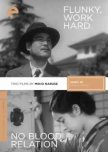
This review may contain spoilers
Naruse's earliest surviving film packs a lot of heart into a short amount of time
Flunky, Work Hard aka Little Man, Do Your Best is the earliest surviving Naruse Mikio film. The film clocks in under 30 minutes but manages to pack a lot of story into the short amount of time. Comedy and tragedy are both on display in this 1930’s rural Japan slice of life film.Okabe is a life insurance salesman with few prospects, doing the best he can to support his family. We know the family is struggling when he attempts to repair his shoe in an early scene with newspaper. Their hut lies near sewer pipes and in a foreshadowing move, the railroad. The wife may voice her displeasure at their financial circumstances but she works hard and deals with disgruntled neighbors and the landlord while meek Okabe hides. His precocious son, Susumu, keeps running afoul of the local wealthier kids. Susumu dishes it out as good as he takes it, making a name for himself. Okabe, meanwhile, is willing to demean himself in order to make a sale, even allowing kids to play leapfrog with him in an effort to win over the mother. In a pivotal moment, he argues with Susumu after his son has fought a potential client’s child, leading to dire consequences. Okabe’s desire has been to provide for his family and he wants to buy his son a toy plane. In the end, his efforts may have come to naught when he realizes what his actions have caused.
I know Naruse primarily through his films centering on a strong woman doing what needs to be done for herself or her family. In this film, he focuses on a father who loses sight of what was important while trying to make a living during the Depression. Though short, the film was entertaining. Naruse used a variety of camera effects to convey characters’ emotions. The version I watched had no music but I’ve come to accept this with these much older films along with the degraded film quality. The story was straightforward enough that the placards were hardly necessary but the few in the film were effective. Naruse gave us an insight into 1930’s rural Japan with this small family that has managed to survive the years. Though the ending may have been heavy handed, comedy, tragedy, and irony, all played their roles in this heartwarming film focusing on a struggling father and his love for his son.
1/26/23
Was this review helpful to you?
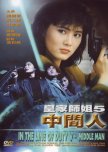
This review may contain spoilers
Lots of high flying kicks not encumbered by a coherent plot!
Cynthia Khan returns to the In the Line of Duty franchise for Middle Man. This 1990 film feels more like an 1980’s Hong Kong martial arts movie. Lots of fighting, very little plot.Cynthia is joined by David Wu in this convoluted story that goes from Hong Kong to Korea. It involves the US military, CIA, HK police, and an underground information spy ring. Wu’s David is accused of spying and the race is on to see who can kill him first. He has to drag around the dumbest girlfriend ever for awhile until the writers mercifully divest him of her. Khan’s Inspector Yang Li Ching helps her cousin elude the murderous gang, CIA, and police so that they can hunt down The General and collect evidence to clear David. David is not the smartest seaman on leave making Inspector Yang’s job even tougher trying to keep him alive.
The thin plot only served to grant space for the fights, lots and lots of fights. Most of them were well choreographed with a minimum of wire-fu and cranking. Khan was quite proficient and believable as she athletically ran, kicked, leapt, slid, and even dangled off of buildings and ropes. She lacked some of the onscreen personality of say Michelle Yeoh, but was likeable enough in this role. Wu was adequate but not terribly charismatic. Lo Lieh, at nearly 60, showed up as the gentle godfather who still had a few moves left. A nice surprise was Australian Kim Penn, a real-life martial artist and member of the Hong Kong Stuntman Association who made a beautiful foil for Khan as they had one of the bloodiest girl on girl fights I’ve seen in some time.
Middle Man was an entertaining martial arts movie if you don’t pay attention to the plot and just enjoy the fight choreography. It’s rare that a female lead is allowed to carry a gun toting, fists and kicks movie, so I bumped it up a bit in my rating.
1/25/23
Was this review helpful to you?
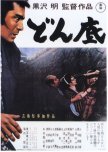
This review may contain spoilers
"You'll learn to love me, the lessons are free." Don't bet on it.
The Lower Depths refers to a group of impoverished tenants living in a building that is propped up with beams and the cliff it leans against. It’s a dark comedy about people who have no hope for tomorrow, living close to the edge of death and pennilessness.The film is based on the Russian playwright Maxim Gorky’s 1902 play. Most of the film is set inside the dilapidated tenement as if it were a play with characters walking on and off stage. The technique can make for a claustrophobic experience as if you were trapped in the room with straw covered floors and unlikeable characters and like them have no means of escape.
The film is one long unending conversation between the different characters. They spend their time complaining about their lot in life and complaining and gossiping about each other. There’s a tinker, a prostitute, a husband and wife, a thief, a cheating gambler, and an alcoholic cohabitating in the great room with bunk beds. Their usual tirades are broken up by the appearance of an older man, nicknamed Grandpa, who brings a bit of wisdom and compassion to the bickering group.
This was my least favorite Kurosawa by far. I didn't find any of the characters or performances particularly compelling. Even the charismatic Mifune Toshiro struggled to bring the thief having an affair with the landlord’s wife to life. The characters complained about their lives incessantly, but even when Grandpa tried to tell them there might be something better away from the toxic environment none of them took a chance to make the move. Only one did and it ended in utter disaster. Kurosawa at least got his consistent view of women out of the way in the first scene by having a character state that all women are liars.
There is much discussion about when telling the truth is bad and telling a lie is good. The benefits and downfalls of money is also discussed. “Money buys your fate in hell.” “Human kindness can’t be bought with pennies or silver.”
I suppose I need more white space, and this film had too many words crammed together from beginning to end with scarcely a breath or compelling action taken between them. Acts of compassion were few and far between causing the characters to not resonate with me. This room full of characters failed to enlighten me on the social plight of the poor, the failings of the state, or how people even in dire situations look out for each other. Though there were moments of almost grudging kindness there weren’t any likeable characters, with the possible exception of Grandpa. Truly by the last moments of the film with its extremely abrupt ending, I wasn’t sure what I was to take away from this story other than a window into a deeply flawed group of impoverished people trying to get through the day knowing that when tomorrow comes it will not be any better.
If you are interested in watching a Kurosawa film, this is not the one to start with. If you are a Kurosawa fan, this is a must see, as it differs from the films preceding it and is worth a look.
1/6/23
Was this review helpful to you?

This review may contain spoilers
Kaiju sushi anyone?
Gamera vs Guiron was my first Gamera movie. I watched it several years ago before knowing anything about this franchise. Two boys accidentally go into space in a strange ship and a giant turtle with flames coming out his backend comes to their rescue on the 10th planet hiding behind the sun? Yeah, I'm the person who will sit down and watch that.The two mischievous boys witness a spaceship landing and board it without any forethought. It closes up and heads for home via an asteroid belt. Fortunately, Gamera hears the boys and protects them. The spaceship flies faster than he does so the boys end up on a strange planet where the water runs backwards and giant kaiju inhabit the place before Gamera can get there. They are greeted by two space women who look a lot like an early Frieza from Dragon Balls. If you are not a 10-year-old boy, the middle of this movie can get tedious, even with silver clad cannibal space babes.
Fifty minutes into the story, Gamera finally shows up and duels with a giant land shark with a huge blade coming out of his head. Guiron also has some nifty throwing stars that shoot from his body. The first fight doesn't go well for the big turtle but the first one never does. When Gamera collects himself and starts the fight over we are witness to him doing a gymnastic bar routine with a perfect 10 dismount. In only his 6th outing, it felt like Gamera had jumped the blade faced shark.
Gamera was fully a friend to children by this time. The boys weren't too annoying but I could have used less time on them and the space women overall. The mothers were belligerently obstinate in disbelieving the little sister who had witnessed the boys getting on the spaceship. One mother was wanting to give her son 30 lashes for running away. Eventually, some grown-ups appeared to let them know the child wasn't lying. These two women were the most exasperating part of the whole movie.
By the time Gamera was shooting across space, heading home with the boys in tow, his theme song blaring you know everyone has learned their lesson. The mothers understood they should trust their children. The boys decided it was better to make Earth a safer place to live than looking to somewhere in space. And Gamera, well, Gamera was probably looking for a place to refuel after traveling across the Solar System and back. Let's go Gamera!
Was this review helpful to you?
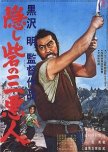
This review may contain spoilers
"The world is dark. Life is just a dream."
Director Kurosawa once again asks what does it take to be happy in a violent and unpredictable world? This time he frames that theme in a 16th century escape picture with a spunky princess, a stalwart General, and two greedy idiots.Two peasants who have escaped from capture and grave digging are the eyes into this story. Much like C3PO and R2D2, they are the lowest ranking people in the movie and it starts and ends with them. Always on the hunt for gold, their greed defines their relationship which is filled with endless squabbling and fighting. Once they find two hidden pieces of gold, whetting their insatiable appetites, Mifune appears as General Rokurota Makabe. Little do the two vagabonds know that their simple escape plan from the occupied country saves their lives. Rokurota enlists their help in transporting gold and a young woman to safety. Of course, Yuki is no mere scantily clad youth, she is a princess, the last remaining hope of her clan Akizuki (Alderaan anyone?). The princess was raised as a boy and is headstrong and courageous.
Yuki actually seems to be enjoying their time on the run, reveling in her freedom. Rokurota , ever the traditionalist, struggles to deal with her egalitarian ideas. Kurosawa is once again bucking the old world order and class systems. The two scoundrels have little loyalty and are only in the deceptive march through enemy territory to survive and get their hands on the gold. Because of their greedy actions they endanger the small group on several occasions. Yuki has Rokurota buy the freedom of one of her people who has been sold as a sex slave, against Rokurota's judgement. On the road they are accosted by soldiers and Rokurota has to engage them in battle and chase two of them down on horse. This particular scene was magnificent. No fake horse head bobbing up and down, Mifune with sword extended chases his enemies down. Brilliant. He ends up in the enemy camp where he challenges the leader, General Tadokoro, to a duel which Rokuroto wins and shows mercy to his conquered foe.
The small group ends up at a bonfire where the locals are singing, "The world is dark. Life is but a dream." The princess really listens to the words and smiling joins happily in the dance. Afterwards due once again to the scoundrels greedy actions, the princess, her general, and the maid end up captured. An embittered Tadokoro faces them before their deaths and the princess' dignity and words have an affect on the enemy. Will he choose tradition or make the morally significant choice?
All of the main characters are faced with choices and have to choose whether to remain in a rigid system or to pick a different more merciful way. Sometimes kindness is rewarded, sometimes it is not. As always, even in this comedy, the world is shown as a dangerous place.
I should take a moment to explain my Star Wars comments. It’s common knowledge that George Lucas drew inspiration from this film for the original Star Wars though it looked to me minimally. Kurosawa drew inspiration from the American director Ford, who filmed epic Westerns. For me this film seemed more like The Good, The Bad and The Ugly. And of course Leone was inspired my Kurosawa. Art is at its best when people draw ideas from different sources and beyond artificial boundaries and then utilize them in a different manner.
We’re all richer for it.
I didn't care for the two scoundrels whatever they were intended to be, everyman, caricatures, or just a couple of bad guys in need of redemption. Their greed, fighting, betrayals and rapey longings for the princess turned me off. They may have been exhibiting some of man's baser nature but drawing straws to see who would rape the princess turned me off.
Mifune Toshiro was perfect as the General bound to protect the princess at all costs, going so far as to sacrifice his sister. Lithe, athletic, and quick, he showed what he was capable of during the lengthy spear fight with Fujita Susumu's Tadokoro. Fujita as a more moral Darth Vader gave a depth, honor, and humor to the old general. For me, the weaker cast member was Uehara Misa as Princess Yuki. When she played a mute, she did well acting with her eyes and facial movements. Even without speaking she guided the action, always brave and assured. But when she spoke she was usually yelling which was distracting. Goes back to yelling doesn't make a woman strong.
Kurosawa's use of wide screen shooting brought an epic style and feel to the film whether it was the valiant group trekking through the mountains, dark forest, or riding horses over the hills. I love how he was able to show people in the forefront, middle and background in the city scenes giving great visual depth.
One thing that always shocks me when watching these older samurai films is how little clothes some of the men wear. Modern samurai films cover them all up. Even Princess Yuki was in what amounted to shorts. The characters and extras all looked real--dirty, sweaty, and with messed up hair. They showed a variety of war gear and weapons as opposing forces engaged. The first fortress may have been battered by war, but was still impressive and some of the shots, especially during a slave revolt were visually a treat. The world Kurosawa and his team built felt truly inhabited.
Throughout the film, characters were required to choose. Will they continue to live the illusion, a world guided by greed and violence? Or will they let go and live a life where everyone can be happy? Or is it even possible in this dark world? Can people let go of the past's traditional shackles and be treated equally and kindly? Or is it a never ending cycle of pain? The Hidden Fortress may have been a comedy with exciting fights and a thrilling escape, but underneath it wanted to be bigger and seek to escape more than just a mortal enemy but a divisive suffering existence as well.
10/27/22
Was this review helpful to you?
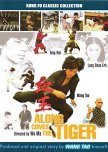
This review may contain spoilers
Silence is a virtue?
Don Wong Tao played the silent fighter seeking revenge for his father's murder. Woe to all the tributaries of the Black Dragon Gang as he rampaged his way across the evil doer's territory.Along Comes the Tiger was a flawed but entertaining kung fu movie. With the twist of a mute hero avenging the death of his father by the infamous Black Dragon, it slightly set itself apart from the crowd. Theoretically based on Once Upon a Time in the West, which I'll have to take it on faith, because aside from a couple of scenes I didn't notice the western influences.
Miracle Man's first fight with a young Phillip Ko Fei was entertaining due to the fact that the bad guy's character was OCD. Suffice to say, Miracle Man messed him up much to the baddie's chagrin.
Doris Lung Chun Erh fought Miracle Man with her female gang, wielding fans with daggers hidden within. Stephen Tung who was the martial arts director for many movies played a government agent trying to clean up the gangs. He appeared and disappeared seemingly at random. A little boy attached himself to Miracle Man in a role meant to bring out the compassionate side of MM but instead was annoying. MM had only one goal in life and that was to take out the Black Dragon Gang's leader. When someone is rampaging in a kung fu movie, not much will stop the carnage.
Stephen Tung and Don Wong did an acceptable job with their fights and acting. One scene with a couple of minions was quite well choreographed. Director Wu Ma showed up to try and take on the MM as well, and as always, he was entertaining to watch. Gam Ming aka Tommy Lee played the dastardly Black Dragon, a humpbacked martial arts master. He also choreographed the fights for the movie. For the most part, most of them were quite well done. I only found the final one a bit of a letdown.
The acting was slightly above what you might expect from what appeared to be a low budget film. Don Wong Tao's character seemed to benefit from playing it silent. The only drawback for me was the kid, though it seemed they were trying to bring things full circle since MM had witnessed his father's death. The story had some weird lapses of logic, especially where the female characters were concerned. If you can overlook the shortcomings there was decent kung fu flick to be watched.
For martial arts movie fans, particularly older ones, this might be one to give a try sometime. It was non-stop action from beginning to end and didn't feel like each fight was a duplicate of the others.
Was this review helpful to you?

 31
31 98
98 7
7





















